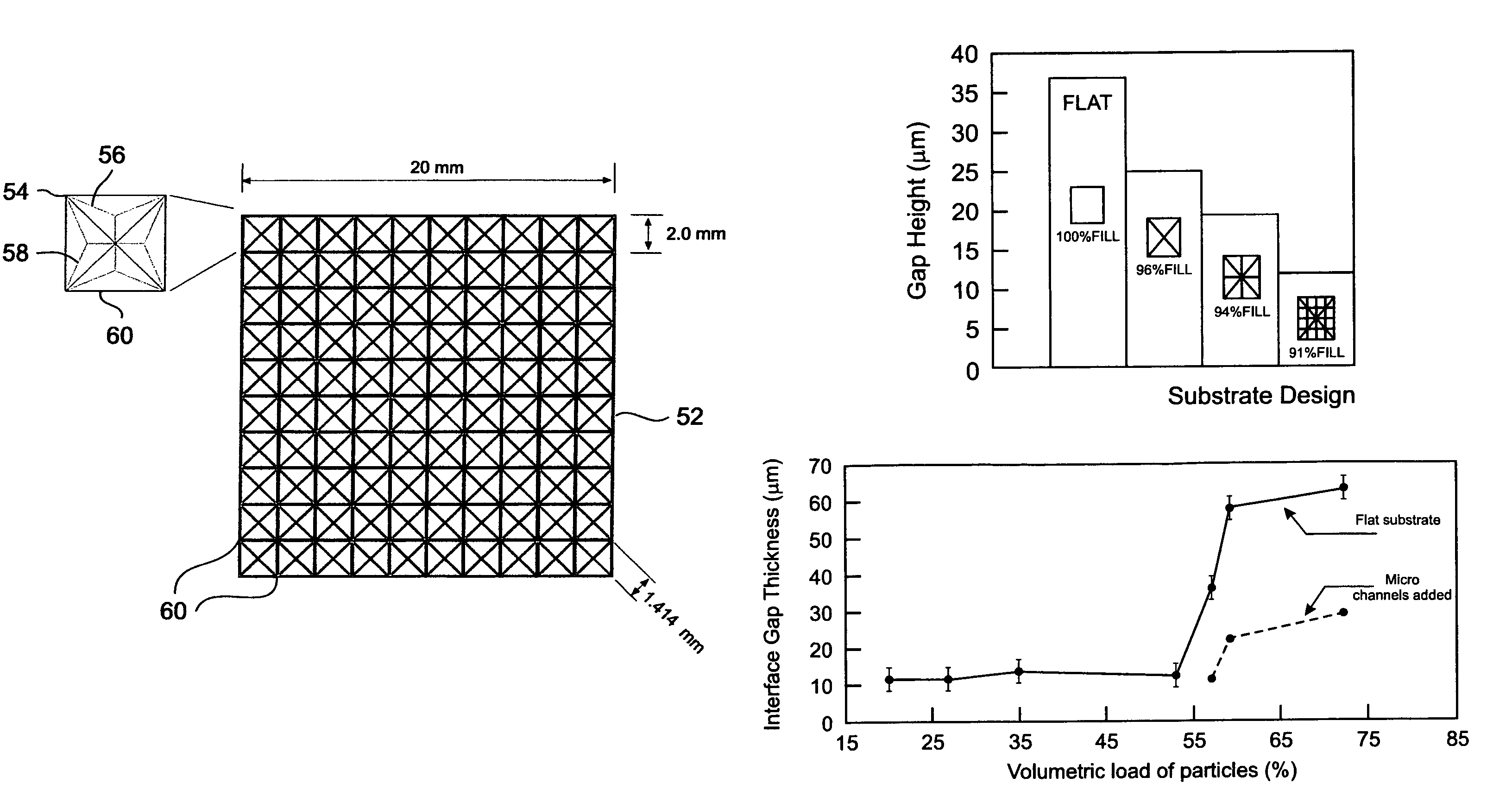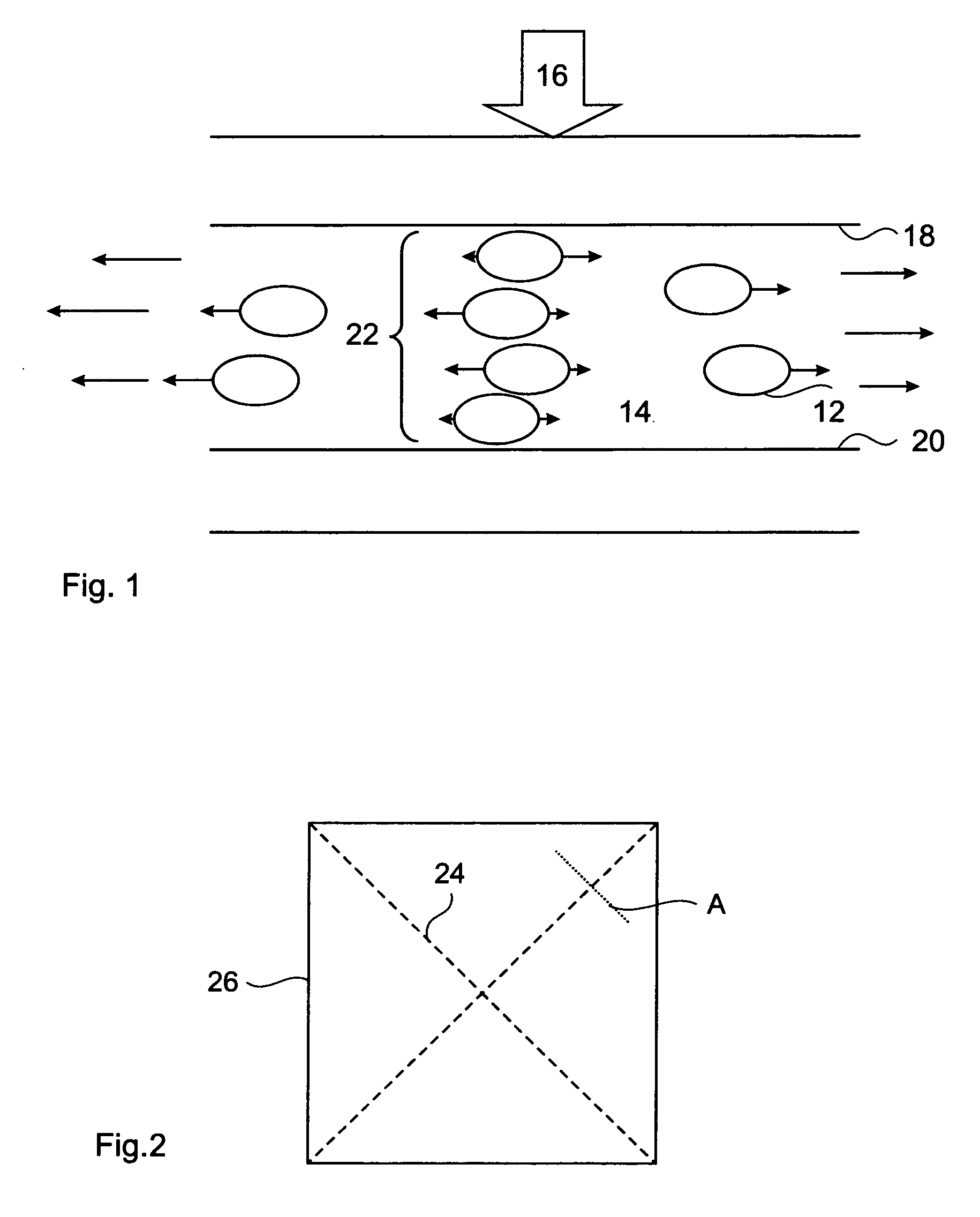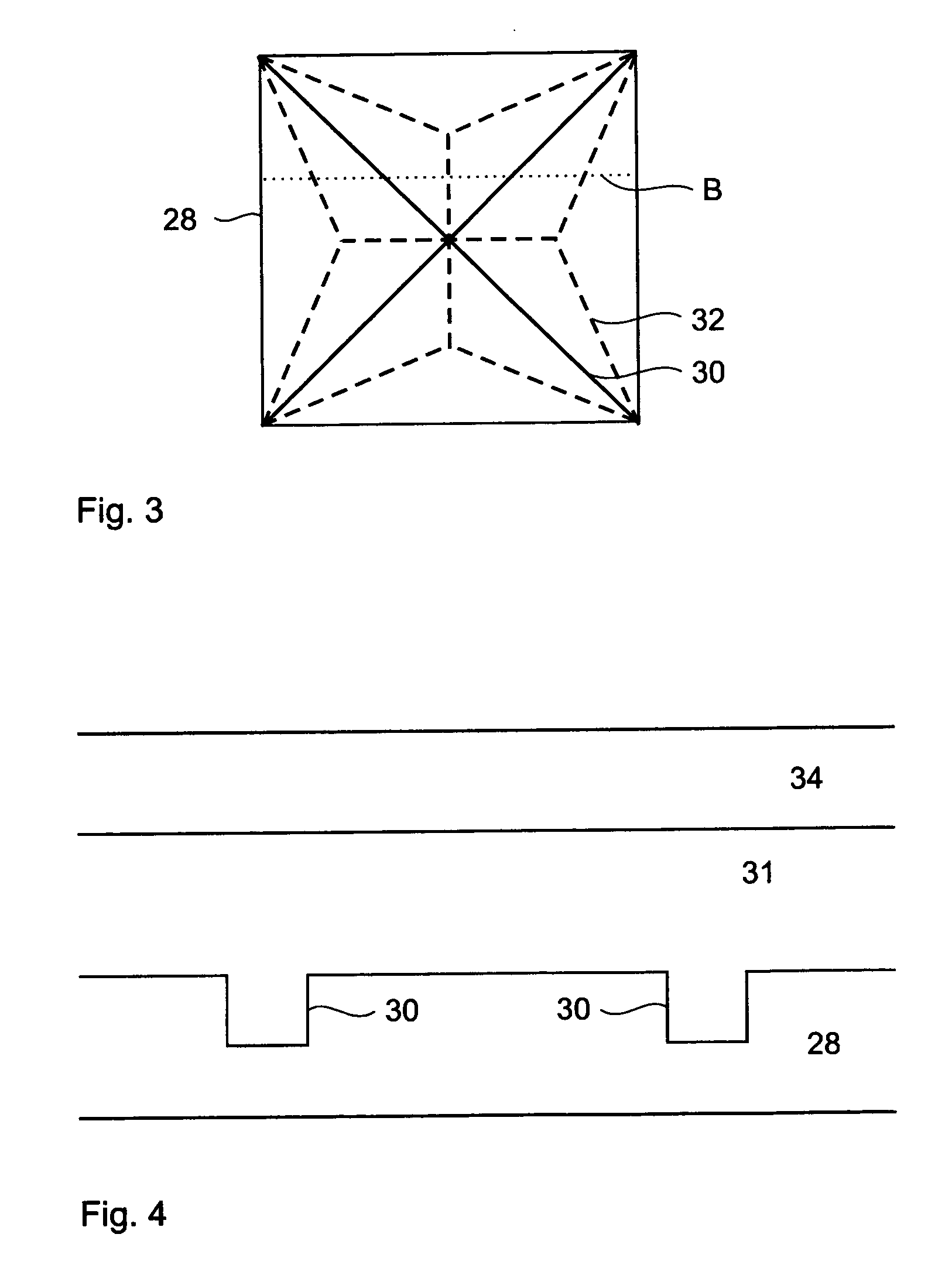Thermal interface with a patterned structure
a patterned structure and thermal interface technology, applied in the direction of regenerative heat exchangers, indirect heat exchangers, lighting and heating apparatus, etc., can solve the problem of unfavorable thermal and mechanical properties, low effective viscosity, and limited effective conductivity above the percolation threshold, so as to achieve uniform and improve thermal and mechanical properties.
- Summary
- Abstract
- Description
- Claims
- Application Information
AI Technical Summary
Benefits of technology
Problems solved by technology
Method used
Image
Examples
Embodiment Construction
[0035]When a thermal interface is formed by pressing a flat face of the microprocessor chip and a flat face of the cooling device together, with a thermal interface material (TIM) between, the TIM flows in directions dependent upon the shape of the chip. For example, for a circular microprocessor chip, the net TIM flow speed is zero at the center of the circular face and increases with the radius. For a rectangular or quadratic chip, the TIM flow similarly increases with the distance from the center and additionally flows outward from the center until the edges of the chip are reached. Further, velocity gradients in the TIM develop due to pressure variations which are primarily a function of the distance the TIM must flow to reach the perimeter of the chip.
[0036]For a thermal interface on a quadrangular or rectangular plate, the velocity gradients are located along lines connecting diagonally opposite corners because the largest pressure drop occurs where the TIM must flow the large...
PUM
| Property | Measurement | Unit |
|---|---|---|
| depth | aaaaa | aaaaa |
| width | aaaaa | aaaaa |
| depth | aaaaa | aaaaa |
Abstract
Description
Claims
Application Information
 Login to View More
Login to View More - R&D
- Intellectual Property
- Life Sciences
- Materials
- Tech Scout
- Unparalleled Data Quality
- Higher Quality Content
- 60% Fewer Hallucinations
Browse by: Latest US Patents, China's latest patents, Technical Efficacy Thesaurus, Application Domain, Technology Topic, Popular Technical Reports.
© 2025 PatSnap. All rights reserved.Legal|Privacy policy|Modern Slavery Act Transparency Statement|Sitemap|About US| Contact US: help@patsnap.com



